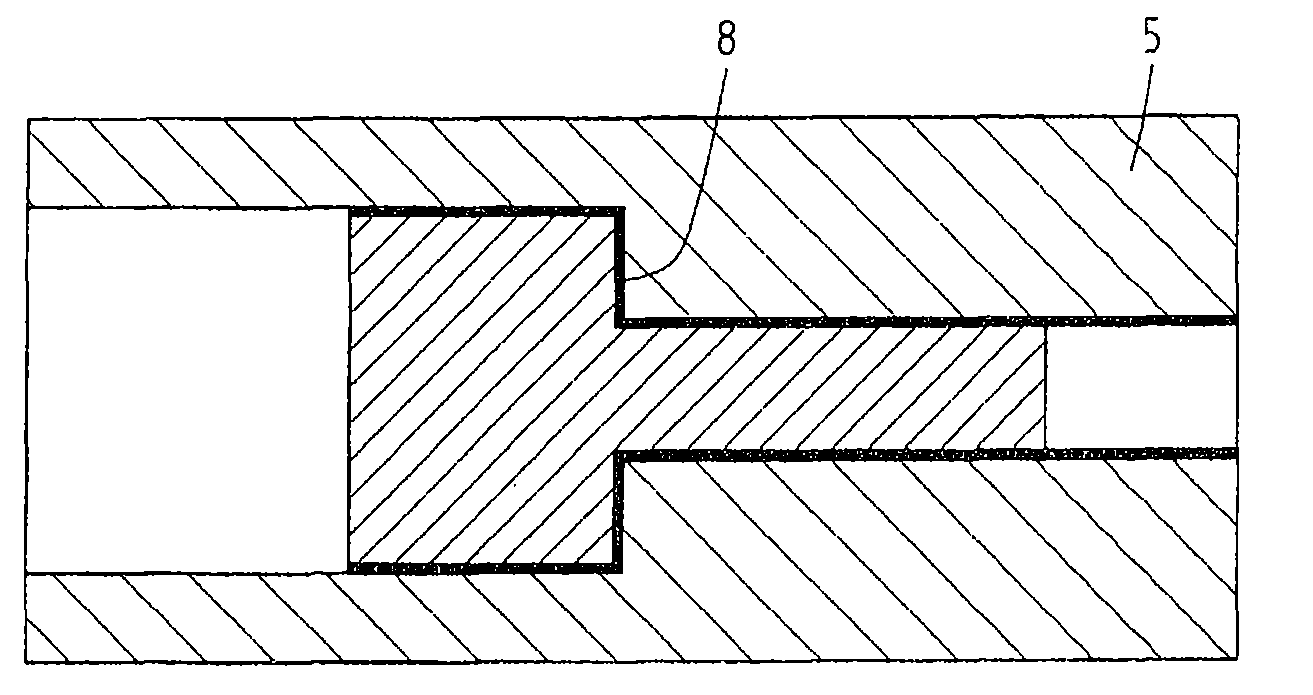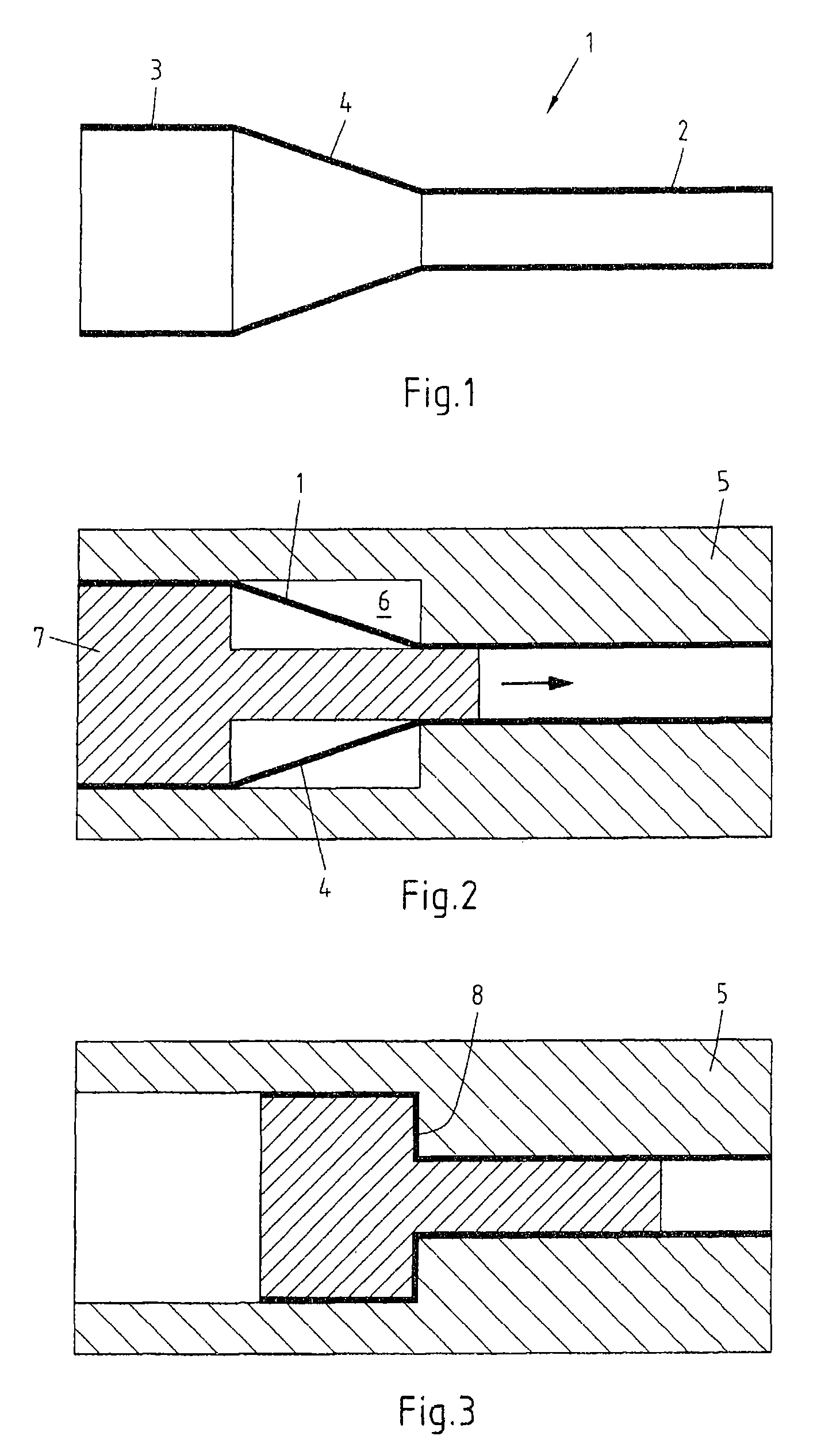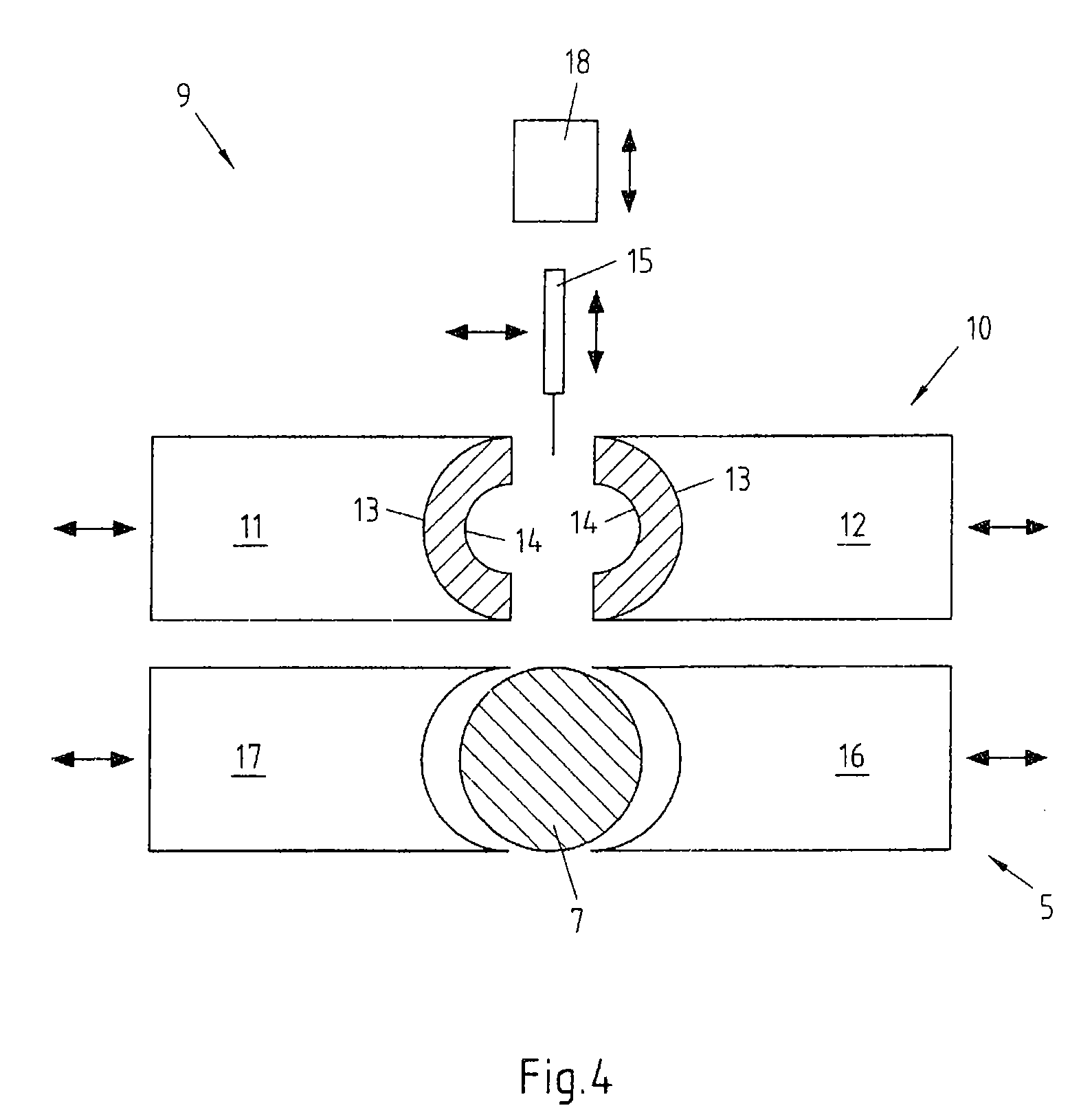Process and apparatus for producing a hollow body, and hollow body
a hollow body and hollow body technology, applied in the field of metal production methods, can solve the problems of thinning out the thickness of the sheet, increasing the cost of production, and prone to corrosion of the seam, and achieve the effects of high stress, small sheet thickness change, and high strength
- Summary
- Abstract
- Description
- Claims
- Application Information
AI Technical Summary
Benefits of technology
Problems solved by technology
Method used
Image
Examples
Embodiment Construction
[0024]In FIG. 1 firstly the preform body 1 is illustrated in a schematic, axial sectional view. The preform body has a first axial portion 2 with a first cross-sectional area and a second axial portion 3 with a second cross-sectional area. The cross-sectional area of the first axial portion 2 is smaller than the cross-sectional area of the second axial portion 3. In the transition region 4, extending in the axial direction, which is arranged between the two axial portions 2, 3, the cross-sectional area of the axial portion 2 changes into the cross-sectional area of the axial portion 3. In the exemplary embodiment illustrated, the shape transition is continuous or linear in the transition region 4 extending in the axial direction. However, other shape transitions are also conceivable. The preform body 1 shown in FIG. 1 can, for example, be produced using the rolling-in technique or U-O forming. In this case, the preform body, as also the finished hollow body, has a circular cross-sec...
PUM
| Property | Measurement | Unit |
|---|---|---|
| thickness | aaaaa | aaaaa |
| shape | aaaaa | aaaaa |
| axial length | aaaaa | aaaaa |
Abstract
Description
Claims
Application Information
 Login to View More
Login to View More - R&D
- Intellectual Property
- Life Sciences
- Materials
- Tech Scout
- Unparalleled Data Quality
- Higher Quality Content
- 60% Fewer Hallucinations
Browse by: Latest US Patents, China's latest patents, Technical Efficacy Thesaurus, Application Domain, Technology Topic, Popular Technical Reports.
© 2025 PatSnap. All rights reserved.Legal|Privacy policy|Modern Slavery Act Transparency Statement|Sitemap|About US| Contact US: help@patsnap.com



